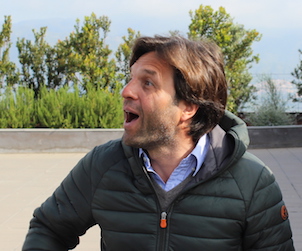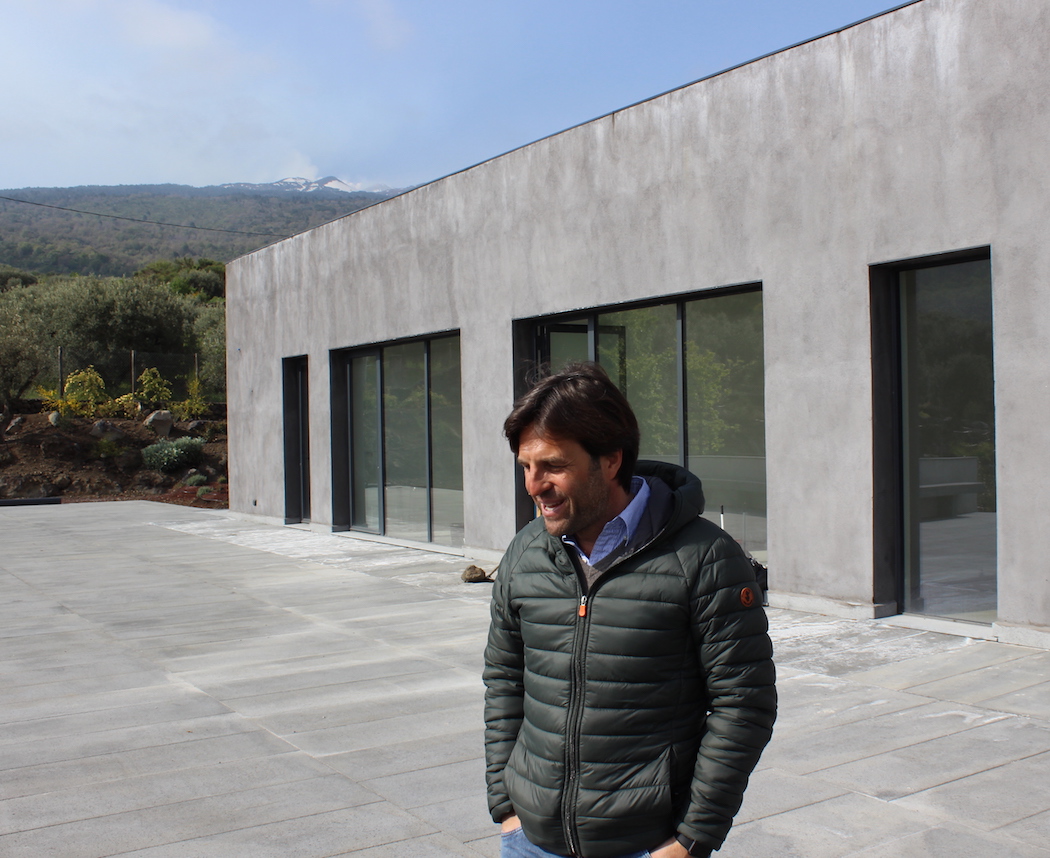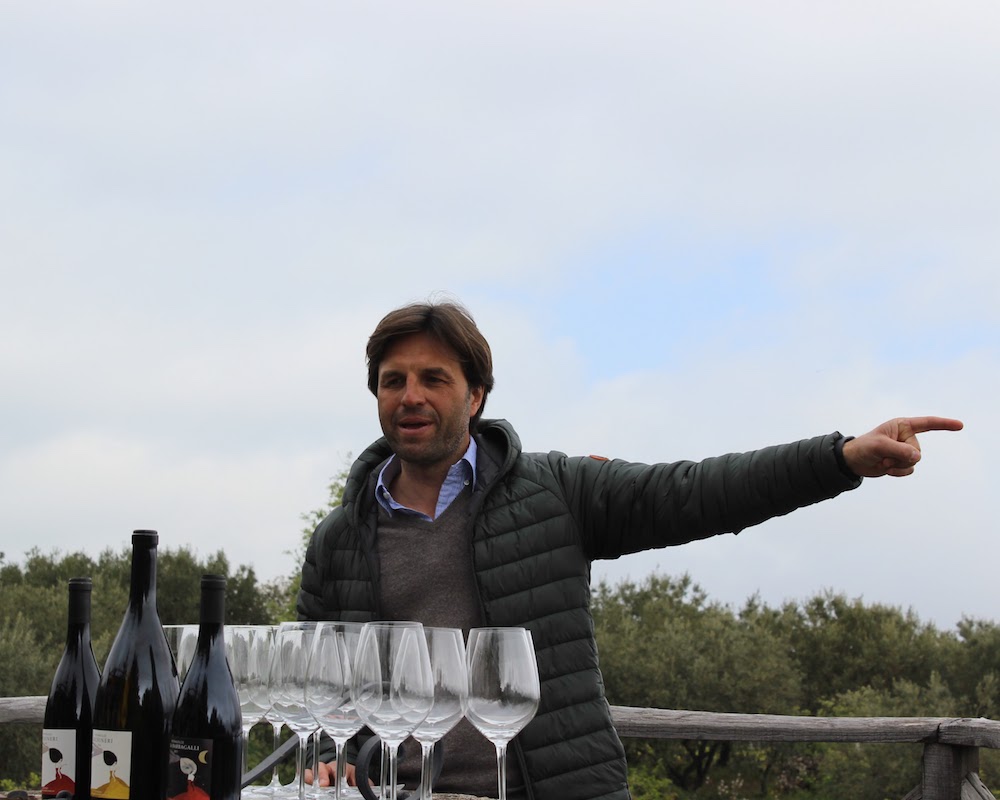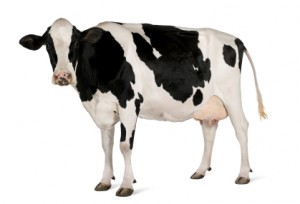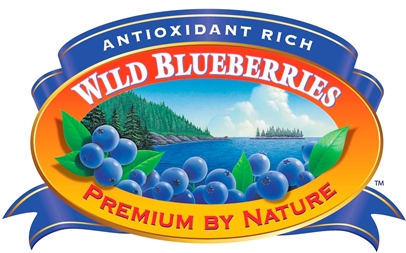Malcolm Jolley meets one of the architects of the Etna Risorgimento.
This post is part of a series (here) on Sicilian wines, based on a trip to the island that I recently took as a guest of Assovini Sicilia to attend this year’s Sicilia en Primeur.
Sweet stone, that’s how Pietradolce translates into English, and the dark volcanic rocks that have flowed out from Mount Etna are everywhere in and around its high altitude vineyards and even ground into the cement of its brand new, aggressively eco-friendly, winery. The man behind Pietradolce, Michele Faro is one of the principal architects of the Mount Etna wine risorgimento (‘resurgence’). Pietradolce is still a small, and independent winey, making about 7,500 cases, or 90,000 bottles, of Etna Rosso DOC and Etna Bianco DOC, from the indigenous red grapes Nerello Mascalese and Nerello Capuccio, and their white counterpart Carricante. As is the way with the best Italian producers, Faro and Pietradolce combine a fierce loyalty to tradition with a keen eye for innovation, as long as it serves the quality of the wine.
Faro became interested in the potential of his family’s ancestral a little over fifteen years ago, which places him among Mout Etna’s vigneron pioneers. The original family plot is quite amazing. It sits at around 900m above see level on Etna’s north slope, just under the 1km limit for the DOC. (There are vines grown higher than 1,000m but they can only be used for IGP Terre Siciliane wines.) This is vini estrimi, it’s bleak once you get high up on Etna, whose summit was still covered in snow and entertaining us the morning we visited Faro at Prietradilce with a steady plume of smoke and ash. In fact, the oldest vines, which are up to 100 years in age, are in a depression or ‘amphitheater’, protected by old laval flows that break the mountain winds. They sit together alone as bush vines, in the traditional alberello method. Each of the gnarly old vines, which sit on pre-phyloxera European root stalk (see this post, Magic on Mount Etna, on the history of Etna wine production), is crowned with a ‘goblet’ of three shoots, which will be responsible for all of its small yield. This method of planting, Faro explained, means that the vines are never in the shade. Because the grade is steep, the slopes are terraced with dry walls made of the dark lava stones. Stones which aren’t used for terracing, are piled up into pyramids called torretta: small towers. All the vineyard work at Pietradolce is done by hand.
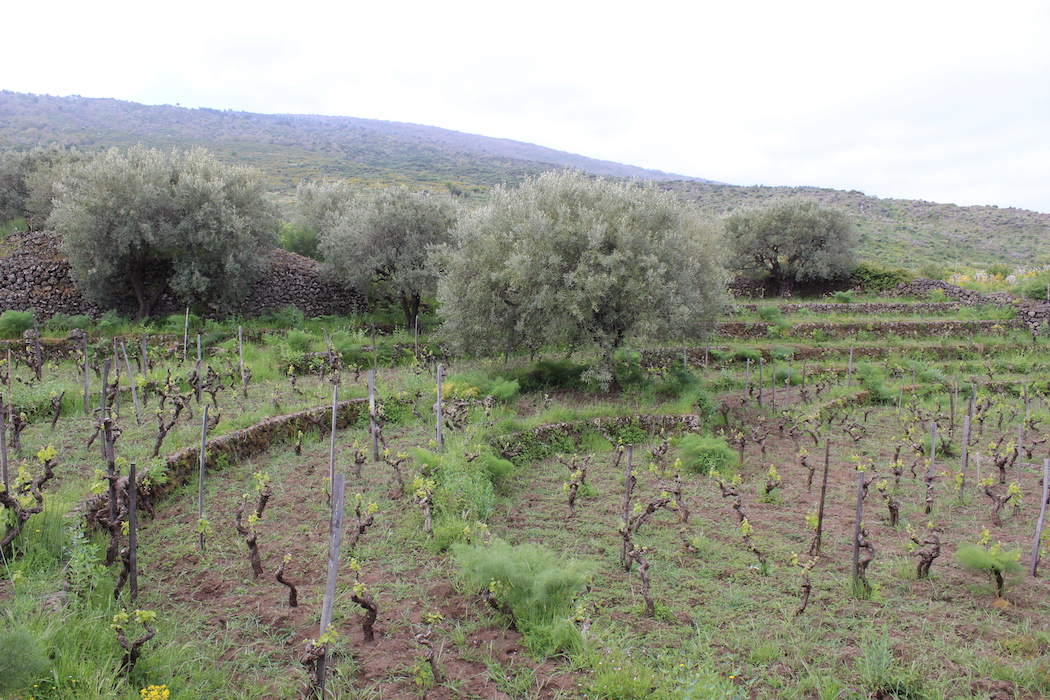
Michele Faro calls Mount Etna “an island on an island” and thinks the wines he makes in its cool climate are closer to those of Northern Italy than the ones from other parts of Sicily. While in the hot, dry West of Sicily it’s not unusual to harvest grapes in mid-Summer (at night), Faro typically harvests his grapes in November. While much attention has been paid to Etna’s famous volcanic soils, and the quality of ‘minerality’ they are thought to lend their wines, I wonder if much of their typicity (pure in fruit with a lift of ‘macchia’ or ‘garrigue’ Mediterranean herbaciousness) comes from the climates long and steady growing season.
Wine making at Pietradolce is non-interventionist. New oak is eschewed for steel tanks and larger, old barrels . Faro explained that he is trying to rediscover the “smells of my grandfather’s cellar”, making wines that are true to wines people made for themselves. On my visit, with a group of Italian and international wine journalists, we tasted a few wines. First the Archineri 2016 Bianco, made from pre-phyloxera Carricante vines, grown at 850m. Wow, it was really amazing. Super fresh, lemony, a little salty, but also round and elegant with note of almond. Readers will be reassured to know that, since it was in magnum, I believe I tried a second glass just to be sure of my evaluation.
Then, we tasted two reds. First the Archineri 2010, which was a lovely and alive with red cherry and raspberry notes and crazy long finish. Finally, another vineyard: the Barbagali 2013, which was insanely good. Again, this wine was very much alive with red cherry and raspberry notes, and just a little, and pleasingly, bitter on the finish. There were still some tannins to soften, but it was delicious young. Look for these wines, as well as the second tier Pietradolce labels. (Pietradolce is represented in Ontario by Woodman Wines & Spirits.)
Michele Faro took a chance on the ways of his grandparents, and it’s working out. While Mount Etan seems like one of Europe’s hottest “new” wine regions, I think it’s only getting started. For his part Faro is delighted at the resurgence of interest in wine and agricultural ways on the mountain, in particular the return of young people to the land, just as he did fifteen or twenty years ago.

